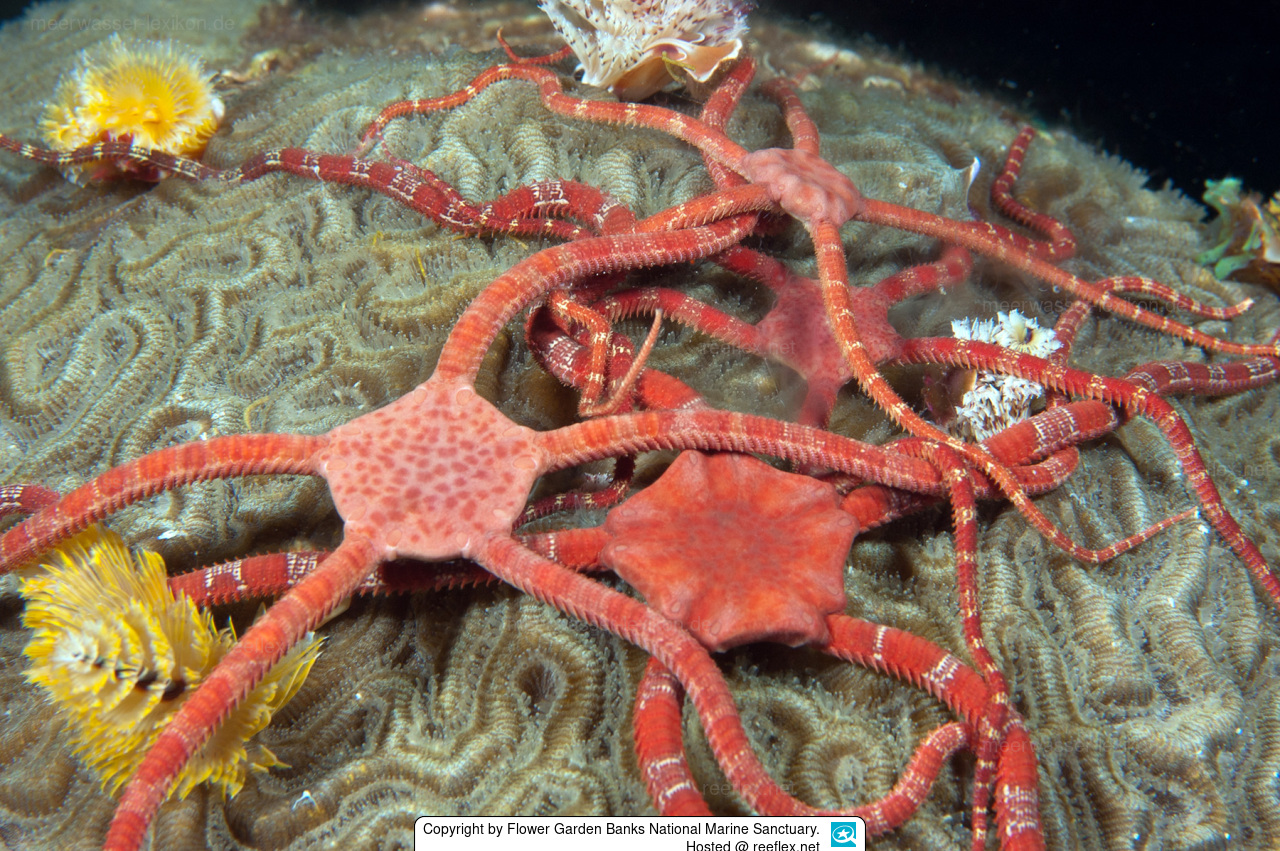Info
Ophioderma rubicundum Lütken, 1856
Ophiuroids, commonly known as brittle stars, are among the most diverse and productive invertebrates in Caribbean coral reefs. Despite their abundance, these cryptic animals are rarely seen as they hide in the reef structure during the day and emerge mainly at night to feed.
The ruby brittle star Ophioderma rubicundum is widespread in shallow reefs throughout the western Atlantic. It is commonly found in reef ridge, reef flat and scree environments. They have been described as “opportunistic omnivores,” feeding on small organisms including dinoflagellates, diatoms, foraminifera, hydroids, polychaetes, crustaceans, and molluscs. The brittle star is an opportunistic omnivore, meaning whatever it can get will be eaten. He has no special preferences.
Ophioderma rubicundum has been observed on well-developed coral reefs fishing for and eating spawn from the currents of the spawning corals Orbicella faveolata and Pseudodiploria strigosa. It is believed that with this behavior the brittle star replenishes its own depleted energy reserves with the protein-rich food of the spawn.
The report states (translated): "Because Ophioderma rubicundum spawns on the same or more subsequent nights as these coral species, we hypothesize that this opportunistic feeding behavior exploits the coral's lipid-rich gamete bundles to recover energy reserves used by the brittle star during gametogenesis. "
Ophioderma longicauda can look quite similar to Ophioderma rubicunda, but it does not live in tropical waters.
Synonymised names
Ophioderma rubicunda Lütken, 1856 · unaccepted (wrong ending due to confusion...)
Ophiuroids, commonly known as brittle stars, are among the most diverse and productive invertebrates in Caribbean coral reefs. Despite their abundance, these cryptic animals are rarely seen as they hide in the reef structure during the day and emerge mainly at night to feed.
The ruby brittle star Ophioderma rubicundum is widespread in shallow reefs throughout the western Atlantic. It is commonly found in reef ridge, reef flat and scree environments. They have been described as “opportunistic omnivores,” feeding on small organisms including dinoflagellates, diatoms, foraminifera, hydroids, polychaetes, crustaceans, and molluscs. The brittle star is an opportunistic omnivore, meaning whatever it can get will be eaten. He has no special preferences.
Ophioderma rubicundum has been observed on well-developed coral reefs fishing for and eating spawn from the currents of the spawning corals Orbicella faveolata and Pseudodiploria strigosa. It is believed that with this behavior the brittle star replenishes its own depleted energy reserves with the protein-rich food of the spawn.
The report states (translated): "Because Ophioderma rubicundum spawns on the same or more subsequent nights as these coral species, we hypothesize that this opportunistic feeding behavior exploits the coral's lipid-rich gamete bundles to recover energy reserves used by the brittle star during gametogenesis. "
Ophioderma longicauda can look quite similar to Ophioderma rubicunda, but it does not live in tropical waters.
Synonymised names
Ophioderma rubicunda Lütken, 1856 · unaccepted (wrong ending due to confusion...)







 Flower Garden Banks National Marine Sanctuary, USA
Flower Garden Banks National Marine Sanctuary, USA








